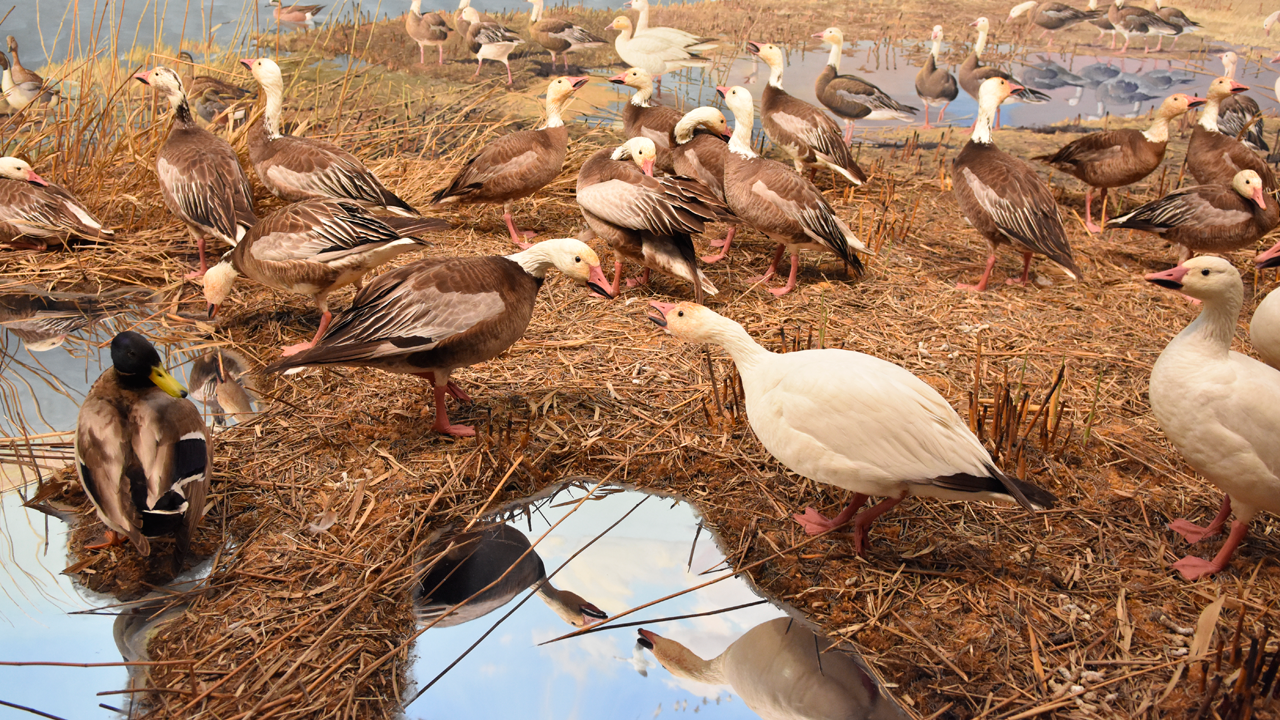
A diorama display of waterfowl at the new Bell Museum building in St. Paul.
Discovering new knowledge and advancing improvements in our health, environment, and well-being is a central part of the University of Minnesota’s mission. So when it came time for the University to weave together the exhibits, galleries, and events that would make up the new and improved Bell Museum, research became a common thread.
As the Bell Museum opens the doors to its new $79 million home on the St. Paul campus this weekend, visitors will explore exhibits on science, art, and the environment. The projects, stories, and experts included in these exhibits will allow them to learn about and connect with U research in new ways, which supports the museum’s mission to ignite curiosity and wonder, explore humanity’s connection to nature and the universe, and help create a better future for our evolving world.
Popular features from the Bell Museum’s previous location—like meticulously constructed wildlife dioramas and the first-of-its-kind Touch & See Lab—will continue to be part of the museum. Among the building’s new features are a planetarium for studying the cosmos; an outdoor Learning Landscape that includes a pond, telescopes, and a sundial; and new permanent exhibits that explore the origins of the universe, the diversification of life on Earth, and Minnesota’s unique natural habitats.
Andria Waclawski, Bell Museum communications manager, said the new facility has helped the museum overcome physical limitations of its former building in Minneapolis and find a natural fit on the St. Paul campus.
“The previous museum suffered from lack of space in an outdated and inaccessible facility,” Waclawski said. “In addition to allowing for new exhibits and features, like the planetarium, the new St. Paul campus facility also allows us to be better connected to nature, natural resource and environmental sciences, and our own biodiversity collections.”
The Bell Museum, originally founded in 1872 as the state’s official natural history museum, is part of the College of Food, Agricultural, and Natural Resource Sciences. Its new, 92,000-square-foot location took almost three years to design and construct.
U Research Runs Through It
Already, more than 60 University researchers have contributed to content and programming at the new museum.
Some are featured as experts in exhibits, such as the Imagine the Future gallery, which explores how humans have moved beyond simply inhabiting the Earth to driving change in the natural world. The exhibit highlights a collection of U researchers who are helping society adapt to climate change, manage natural resources, and face other future challenges.
Other researchers are involved in projects based out of the Bell Museum, like the Mapping Change project. Mapping Change invites the public to get involved as “citizen scientists” in a massive effort to map the distribution of animals, plants, and fungi from the Mississippi and western Great Lakes regions.
The work contributes to the Minnesota Biodiversity Atlas, the Bell Museum’s ongoing effort to make its collection of more than 750,000 wildlife, plant, and fungi specimens available for the public to view online. Scientists can use this data to benchmark where species were found in the past and to forecast future changes in climate and biodiversity.
It’s not just researchers’ work that runs through the new museum—researchers themselves will get involved to help lead Bell Museum events. This summer’s Solution Studio program, for example, will inspire attendees of all ages to channel their creativity to solve challenges designed, in part, by U researchers. Participants will draw on their ingenuity to overcome challenges related to the researcher’s field, from figuring out how an animal moves by studying its bones to building robots that sense and respond to their environment.
Even the new Bell Museum building itself has a link to U research. Nearly half of the exterior is covered by Minnesota white pine that was thermally modified using a technique based on research from the U’s Natural Resource Research Institute. This treatment “cooks” out the natural sugar in the wood that causes decay and discoloration, helping the white pine to resist warping, withstand the elements, and keep a uniform color as it ages.
Learn more about Bell Museum exhibits or plan a visit.
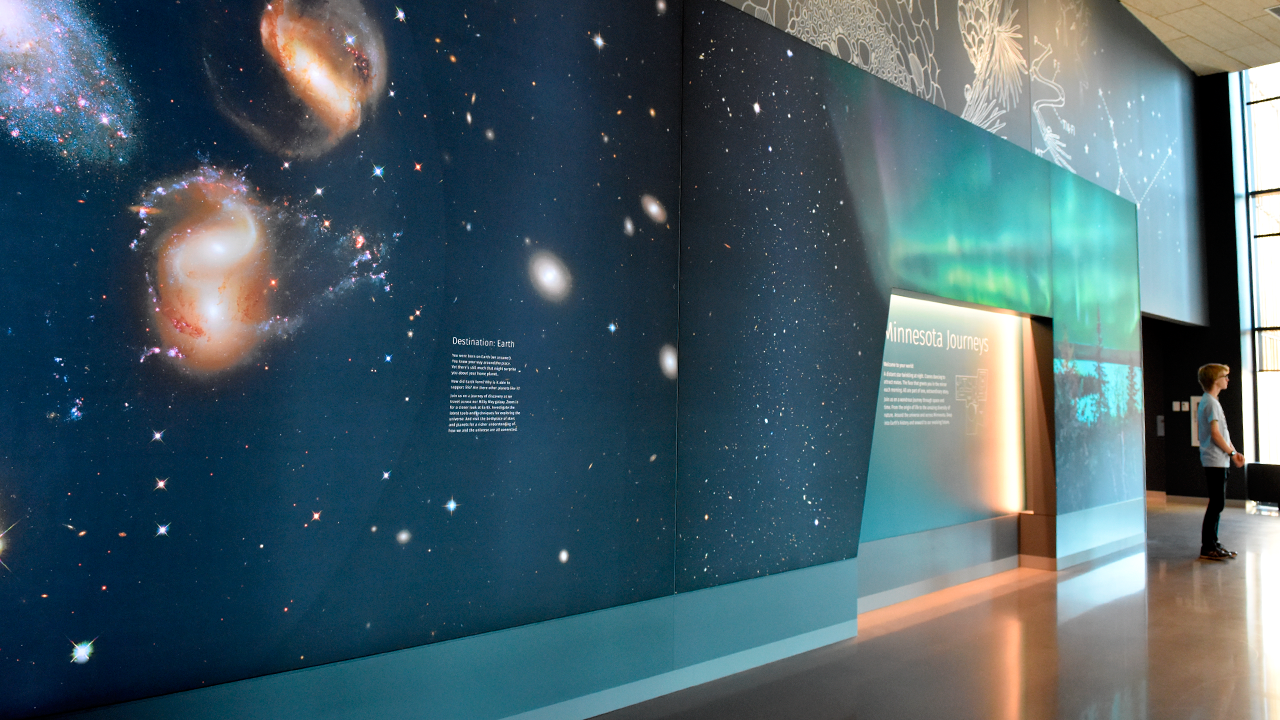
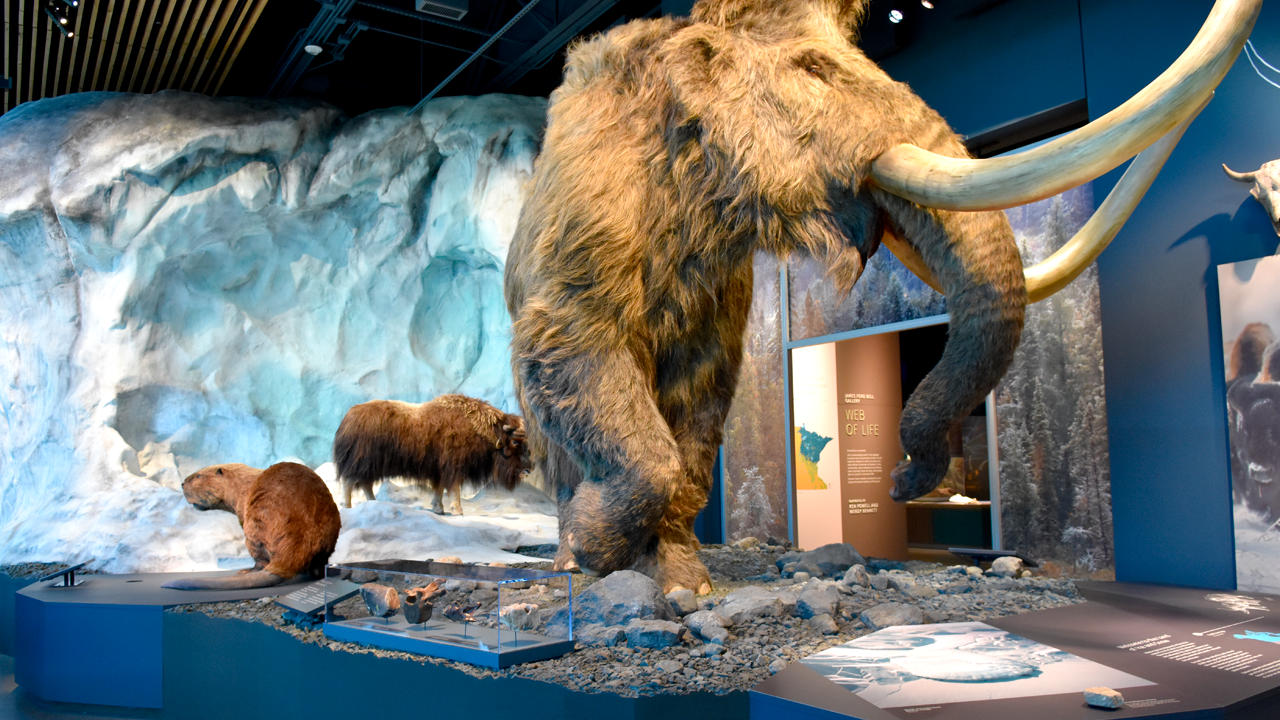
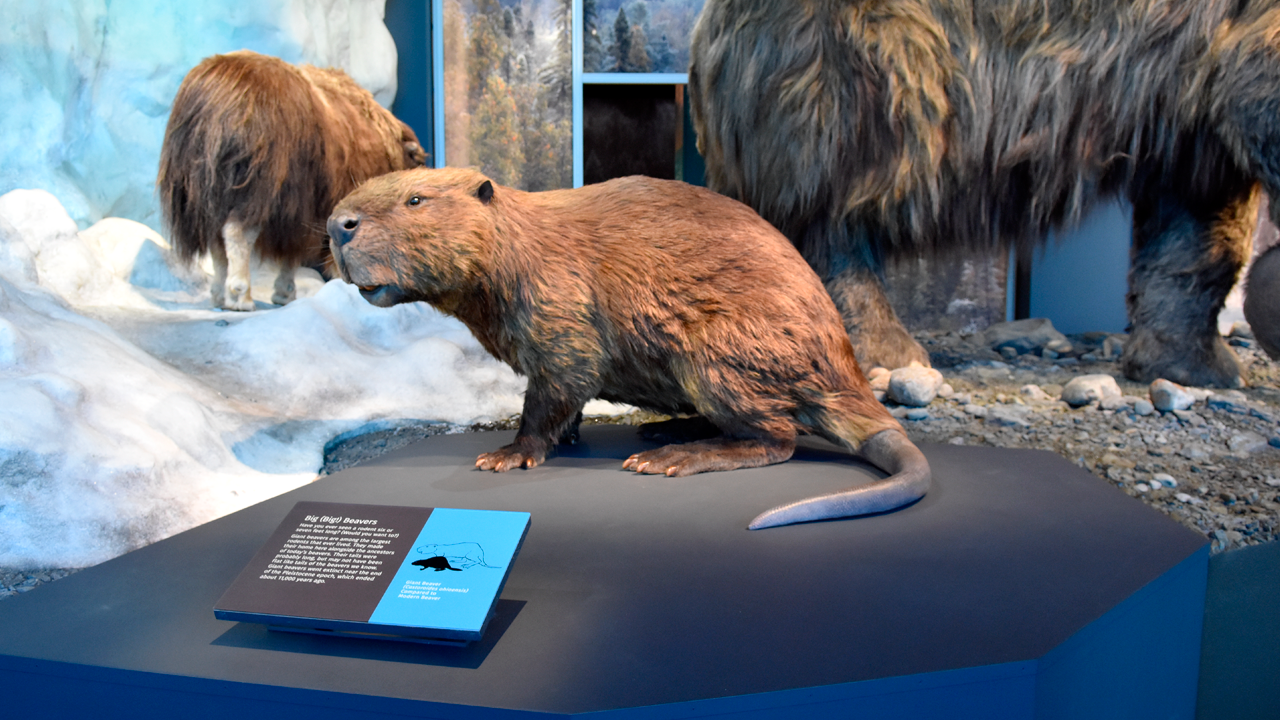

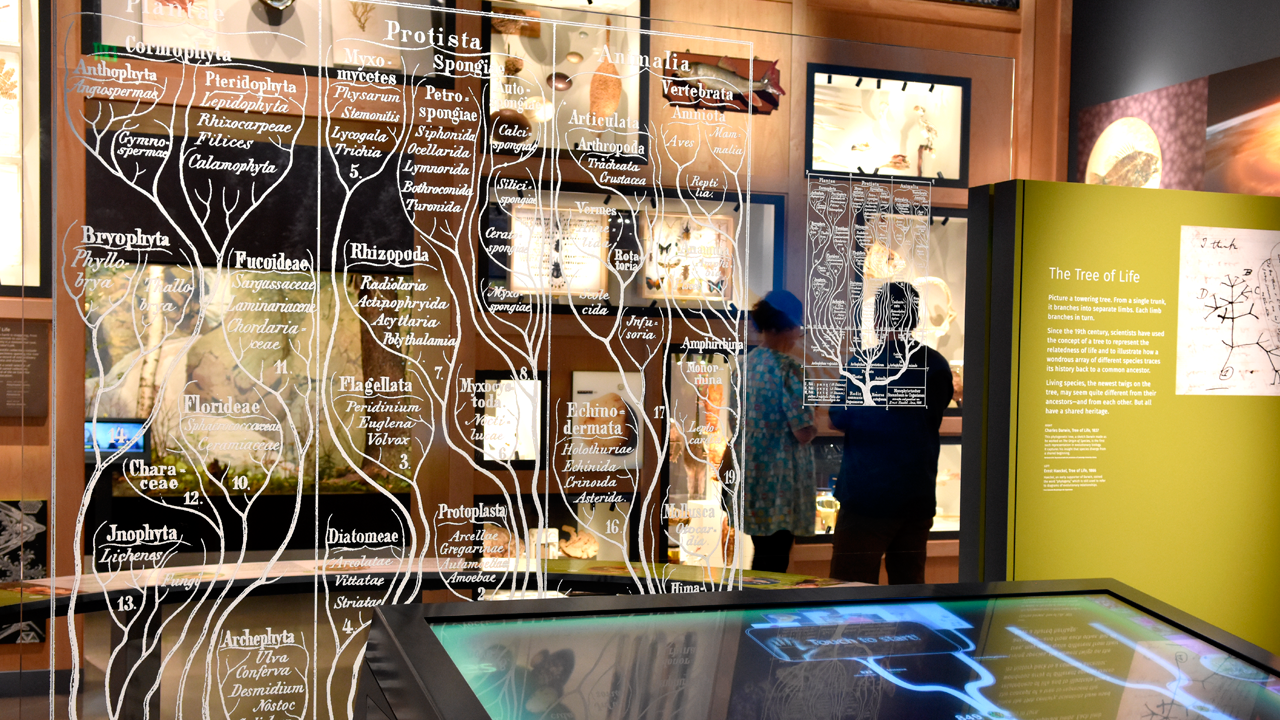
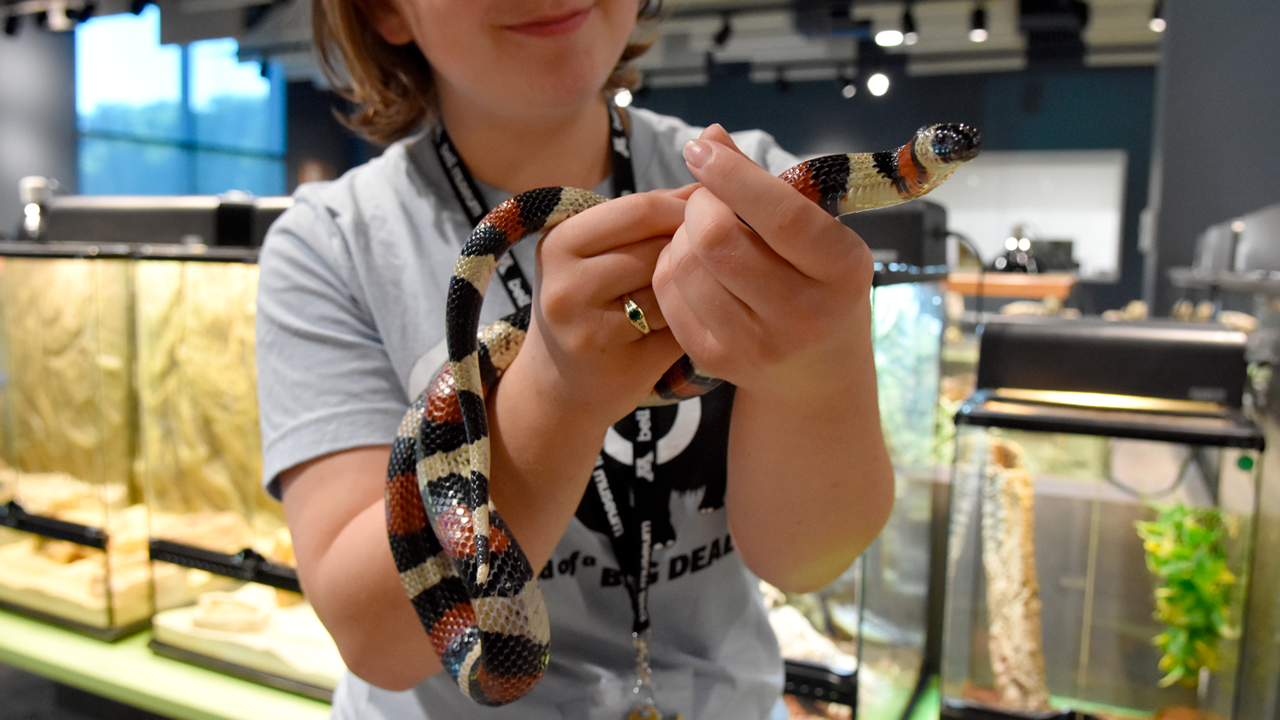
Photos: Office of the Vice President for Research